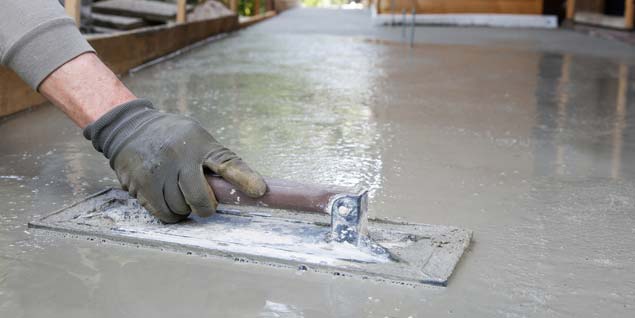Concrete Versus Floor Screeds: What Is The Distinction?

The essential science is no different for both, concrete and screed. For the undeveloped eye, it very well might be trying to see the contrast among concrete and floor screeds. This can sound peculiar, considering that the two materials are produced using similar fundamental fixings: cement, totals, and water.
The essential science is no different for both, concrete and screed. The cement and water structure a glue and coat the outer layer of the sand or the totals, and the cement glue solidifies by an interaction called hydration, framing a solidified mass of high strength and sturdiness.
Notwithstanding, the size of totals, the grade of the cement, and the mix consistency and finish are unique – in light of the fact that the two materials are utilized for various purposes.
Concrete has a lot coarser mixture than a screed, consisting of bigger, in-your-face totals, which are the key components answerable for its sturdiness and dependable strength.
Since concrete can possibly hit exceptionally high qualities, it is utilized across the construction business for underlying purposes – including floor sections. It is the most involved man-made material on the planet.
Screed, nonetheless, is a smoother mix, consisting of considerably fewer totals than that of the mix utilized for concrete.
Screed is normally applied on top of the concrete piece and is generally ordinarily utilized as a completing layer on inside floors, or to even out the floor before conclusive floor covers cover, tiles, regular stone, tile, wood flooring, sap coatings, and so forth
Screeds are required when a beautiful or practical floor is required rather than an uncovered concrete surface. For modern purposes, or business areas, which will go through incessant traffic, a more hearty screed is expected than is utilized in DIY or private activities.
Most screeds are utilized for inside purposes just, frequently covering warming frameworks, acoustic or warm protection. Polymer-altered screeds can be introduced in outer areas, as they are hard-wearing, water-safe, and ready to endure a more thorough climate.
Generally, screeds are sand and cement mixtures, mixed and applied nearby. Be that as it may, these are regularly flighty as the proportions and properties can’t be by not set in stone thus can prompt a feeble flooring layer responsible to break, strip or break down abruptly.
To counter this trickiness there are a few restrictive screeds and packs accessible available contribution upgraded strength and a quicker application speed that will respond all the more typically.
Screed is basically a meager, top layer of material laid over a concrete subfloor, that is customarily made of sharp sand and cement, comparably to concrete. The modern screed can be utilized for all the more rock-solid applications by utilizing a more coarse 6-10mm total.
It is utilized to cover underlying flooring concrete and can be applied to either a strong, in-situ, or precast concrete floor piece. It can likewise be laid on top of protecting materials and is great for covering underfloor warming lines.
Its motivation is to give a smooth, level surface that other completing materials, for example, rug, tile, or floor sheets, can then be laid on top of. That, however, can likewise assist with evening out a floor surface, to guarantee it is protected and level; as a guideline, the level of a floor ought not to change more than 5mm over the space of 3 meters.
Screed and Concrete: What’s the distinction?
Concrete and screed are both made of cement, total and water mix, the thing that matters is that concrete is a lot coarser with all the more in-your-face totals to give expanded strength, though screed involves better totals for a smooth completion.
Screed for the most part costs more than any semblance of concrete and mortar you can discover more with regards to the expense of screed on our screed evaluating page.
Sorts of Screed
There are three principal kinds of concrete and the expected one is reliant upon the base: it very well may be fortified straightforwardly with the base, laid unbonded on top of a clammy confirmation film, or applied as a drifting layer of protective material, for example, underfloor warming.
The base thickness of each sort of screed will fluctuate contingent upon the application. For the most part the more uncompromising the application, for example, in modern or weighty rush hour gridlock regions, the thicker the screed should be.
Anyway as a guideline, for lightweight, homegrown applications the base thickness should go from 25mm for a typically reinforced screed to 65mm for a drifting screed or a screed over underfloor warming lines. We generally propose you consult your primary designer or manufacturer who knows the particular necessities of your structure site.
Whenever required, screed can likewise be supported with a fine metal lattice, polypropylene strands, or a fine glass network.
Conveyance Methods for Screed
Contingent upon the kind of screed you require, it tends to be conveyed in at least one or two ways. Around here at EasyMix we send our vehicles out to mix your screed to the right consistency and afterward store it on location ready for you to wheeled cart to the necessary area.
Different organizations can give an expert screed siphoning administration. A screed siphon isn’t exactly equivalent to a concrete siphon as it conveys a dry mixture of screeds that is basically showered into the expected area. Visit Plamixx factory Qatar for Wall Plaster services













